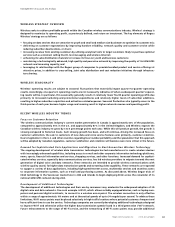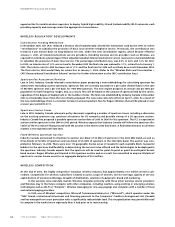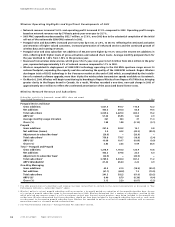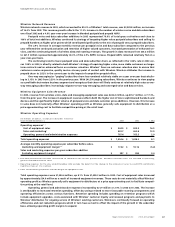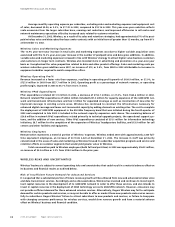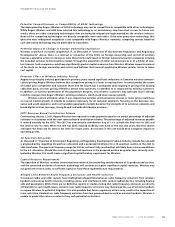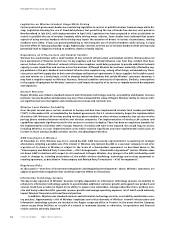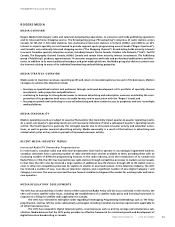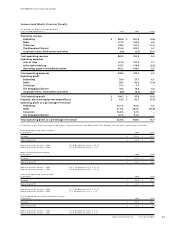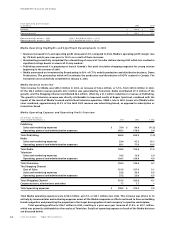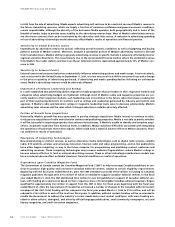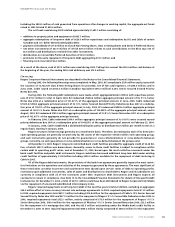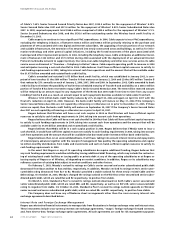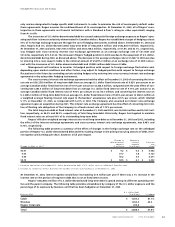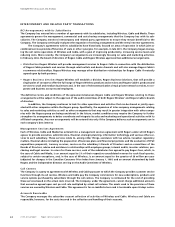Rogers 2003 Annual Report Download - page 54
Download and view the complete annual report
Please find page 54 of the 2003 Rogers annual report below. You can navigate through the pages in the report by either clicking on the pages listed below, or by using the keyword search tool below to find specific information within the annual report.
2003 Annual Report Rogers Communications Inc.
52
MEDIA COMPETITION
Broadcasting’s radio stations compete with the other stations in their respective market areas as well as with other
media such as newspapers, television, outdoor advertising, direct mail marketing and the Internet.
Competition within the radio broadcasting industry occurs primarily in individual market areas, amongst individ-
ual market stations. On a national level, Broadcasting competes generally with other larger radio operators such as Corus
Entertainment Inc., Standard Radio Inc. and CHUM Limited, each of which owns and operates radio station clusters in mar-
kets across Canada. Additionally, over the past several years the CRTC has granted additional licences in various markets
for the development of new radio stations which in turn provide additional competition to the established stations in the
respective markets.
OMNI.1 and OMNI.2 compete principally for viewers and advertisers with television stations that broadcast in
Ontario, primarily in the Toronto and southern Ontario markets. These include Canadian television stations in the Greater
Toronto area as well as U.S. border stations.
Rogers Sportsnet competes for viewers principally with The Sports Network (“TSN”), Headline Sports and sports
programs carried by other Canadian and U.S. television stations and networks.
On a product level, The Shopping Channel competes with various retail stores, catalog retailers, Internet retailers
and direct mail retailers. On a broadcasting level, The Shopping Channel competes with other television channels for
viewer attention and loyalty, particularly infomercials selling products on television.
The Canadian magazine industry is highly-competitive, competing for both readers and advertisers. This competition
comes from other Canadian magazines and from foreign, mostly American, titles that sell in significant quantities in Canada.
In the past, the competition from foreign titles has been restricted to competition for readers as there have been restrictions
on foreigners operating in the Canadian magazine advertising market. These restrictions were significantly reduced as a
result of the enactment in 1999 of the Foreign Publishers Advertising Act (Canada) and amendments to the Canadian Tax
Act. Increasing competition from American magazines for advertising revenues is expected in the coming years.
MEDIA OPERATING AND FINANCIAL RESULTS
Year Ended December 31, 2003 Compared to Year Ended December 31, 2002
For discussion purposes, Media’s financial results have been divided into “Publishing”, “Radio”, “Television”, “The Shop-
ping Channel”, and “Other”, which includes corporate expenses. Publishing includes Media’s consumer and business
publications, as well as its database and medical trade show businesses. Radio includes 43 AM and FM radio stations, TV
listings and its 50% share in Canadian Broadcast Sales (“CBS”). Television includes the results of its two OMNI TV channels
and the Company’s 80% interest in Rogers Sportsnet. The Shopping Channel is Media’s televised home-shopping service.
Media’s revenues consist of:
• advertising revenues,
• circulation and subscription revenues, and
• retail product sales.
Media’s operating expenses consist of:
• cost of sales which is composed of the cost of retail product at The Shopping Channel,
• sales and marketing expenses, and
• operating, general and administrative expenses which include programming costs, production expenses, circulation
expenses and other back-office type support functions.
Management’s Discussion and Analysis



